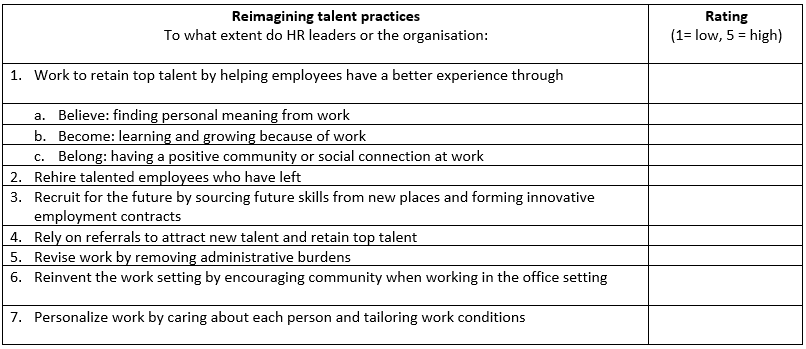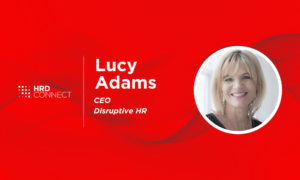Dave Ulrich on conquering the 'great resignation'
- 5 Min Read
HR luminary Dave Ulrich outlines a series of steps leaders should follow to overcome the ‘great resignation’, a talent challenge for organisations across sectors
- Author: Dave Ulrich
- Date published: Sep 14, 2021
- Categories

The ‘great resignation’, or a spike in talent mobility, should not be a surprise. Many employees have spent over eighteen months sequestered, often working alone at home with most work connections through technology. Other employees, while physically at work, have also been socially isolated with safety protocols limiting personal connection.
With more personal time to ponder, and with fewer work-related social connections, employees feel less attached to their teams and organisations, and more willing to explore job and career options.
So, how can business and HR leaders not be resigned to employee resignation?
Retain the best
Employees consider changing jobs for many reasons, including increased opportunity, salary, and working conditions. Opportunity-mobility reflects hope for a better work experience. To counter opportunity mobility, business and HR leaders can increase current employee experience by offering three work conditions: believe (find personal meaning from the work), become (learn and grow from the work), and belong (foster positive relationships at work).
Salary-mobility occurs when employees are offered sizeable financial incentives to move on. Countering salary mobility requires targeted and creative compensation schemes, like higher at-risk pay, increased ownership incentives, or more pay for performance. Working condition-mobility occurs when employees move because of work hours, flexibility, and physical space.
Countering working condition-mobility comes from employees co-creating where, how, and what work is done as long as the work creates value. If better employees are retained, the vicious resignation cycle of losing and then hiring employees can be avoided. It is also useful to recognise that not all employees should be retained, and that perhaps the most “strategic people decision” a leader can make is to place one’s lowest-performing employee in a competitor (and hope they stay!) (ahem!).
Rehire targeted employees who resign
Sometimes, the best talent pool of future employees is competent former employees who might return. At times, those who leave anticipate opportunity, salary, or working conditions that may not come to fruition. Staying in touch with regrettable-loss employees might induce those employees to return.
In addition, rehire (or rebound) employees tend to stay longer and communicate the value of not leaving to those who might be tempted to do so. When rehiring, it is imperative to not create a career promotion track that includes leaving the company, then returning with promotions or salary increases what would otherwise not have been available by bringing former employees back within reasonable salary and career bands.
Recruit for the future
An HR executive who was facing the loss of talent defined talent mobility as an opportunity to recruit new talent better suited for the future. In many cases, knowledge workers (who might be among the first to resign) can now come from anywhere, anytime, and anyplace on agile employment contracts (full-time, part-time, project-based).
If current employees are replaced by future employees with upgraded skills, then talent migration becomes a positive inflection point.
Rely on referrals to replace employees
Often, a great source of future talent comes from referrals from current talent. Asking employees who perform well who they might recommend as potential employees helps identify candidates more likely to contribute to the organisation.
In addition, when a referral is hired, the employee who offered the referral is more likely to stay, because the referring employee public acted as if committed to the organisation. This means encouraging referrals from high performing employees who are likely to refer other high performers and then more likely to stay. As a caution, it is critical to manage diversity in referrals.
Remove low value-added work
Employees may be more likely to leave when frustrated by the bureaucratic falderol they face. One company who lost 20% of their employees committed to reduce workload at least 20% so that the remaining employees were not burdened with performing others’ work.
The remaining employees looked at reports, approvals, meetings, measures, policies, and procedures that were not adding value and were able to remove these administrative burdens to make their work more appealing. Using people resignation as an opportunity to re-examine work process and remove low value-added work helps retain good people.
Reinvent the work setting
Employees who have been working remotely and return to the office should not just do the work they did remotely. If someone comes to work to merely repeat what they had been doing from home, then they are more likely to consider moving on.
Office spaces should be forums for social cohesion and the right culture through collaboration, creativity, and connections. Employees come together to work together, not to isolate.
Personalise work
Mass customisation has occurred in made-to-order products or services that meet unique customer requirements. Likewise, personalisation occurs with employees in two ways. First, treat each employee as a “person” respecting their unique lifestyle and skills by expressing empathy and sharing emotion at a personal level.
Second, be flexible to the unique employee circumstances. For example, hybrid work means that employees may work from whatever location works best for them. Work engagement means that employees appropriately participate in work decisions that affect what they work on and how they work.
Of course, many jobs require in-person work, but even these jobs may be personalised by both caring about the employee and by inviting the employee to co-design ways to improve the job.
Your additional suggestions?
In brief, don’t be resigned to resignation. Review the seven reimagined talent practices as an assessment checklist. Create a cohesive workplace that will then help your organisation succeed in the marketplace. Take a look at the table below and work out the progress you’re making.









